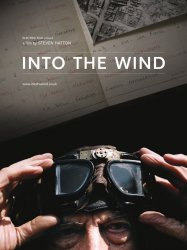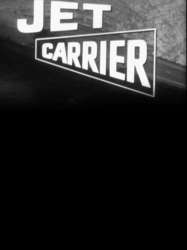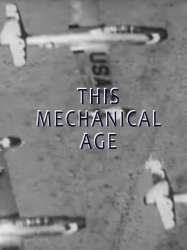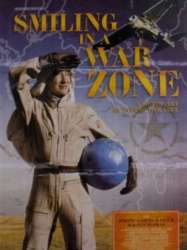Wilbur Wright und seine Flugmaschine is a french film of genre Documentary
Wilbur Wright und seine Flugmaschine (1909)

If you like this film, let us know!
- Infos
- Casting
- Technical infos
- Photos
- Videos
- Film quotes
- Characters
- Music
- Awards
OriginFrance
Genres Documentary
Wilbur Wright und seine Flugmaschine (Wilbur Wright and his Flying Machine) is the German viewing market title of a silent film made in 1909 and is considered to be the first-ever use of motion picture aerial photography as filmed from a heavier-than-air aircraft.
It was filmed 24 April 1909 near Rome by French cinematographic company Société Générale des Cinématographes Eclipse.
The events leading up to the creation of the film began in 1908 when the Wright brothers received an invitation from the Compagnie Générale de Navigation Aérienne to ship a Wright Flyer "Model A" airplane to France and fly it at Le Mans to dispel any remaining doubt that they had indeed conquered heavier-than-air flight. Since few had witnessed their earlier successes, many in Europe were skeptical about their claims. Some skeptics in the European press went so far as to claim that the stories were a "bluff." The 30 August 1908 edition of Le petit journal illustré was quoted as saying, "The experiments that Wilbur Wright is carrying out in France at the moment victoriously responded to this accusation." Among those present for the public demonstrations prior to the filming was Louis Blériot, who would cross the English Channel by plane the following year.
It begins with a shot of Wilbur Wright starting the engine; an unidentified assistant (quite likely his brother, Orville) is seen at the front of the aircraft. From there, shots of the aircraft in flight with Wright at the controls along with an unidentified passenger cut to shots of onlookers on the ground, presumably military and press liaisons. The aircraft is shown in side-to-side flybys as well as low-altitude passes directly toward and away from the camera.
The aerial shots begin at the 1:34 mark immediately after a shot of the aircraft coming to a landing directly approaching the camera. A title card appears which reads Aufnahmen von der Flugmaschine aus gemacht, or "Shots Taken from the Flying Machine." From there, the shot is of the aircraft on its launch sled as it is being prepared for takeoff. An assistant at the rear of the plane, again presumably Orville Wright, starts the engine as Wilbur Wright takes his seat at the controls. The actual onboard shots, with the camera mounted on the left lower wing near Wright's seating position begin at approximately the two-minute mark of the film as the aircraft lifts off from the launch sled. The canard, elevator and the elevator's control cord are in the foreground of the film as the Italian countryside (complete with livestock, a man on horseback and the ruins of a Roman aqueduct) passes beneath.
Wilbur Wright und seine Flugmaschine has been restored and archived by Filmarchiv Austria.
Comments
Leave comment :
Suggestions of similar film to Wilbur Wright und seine Flugmaschine
There are 8968 with the same cinematographic genres, 7108 films with the same themes (including 119 films with the same 3 themes than Wilbur Wright und seine Flugmaschine), to have finally 70 suggestions of similar films.If you liked Wilbur Wright und seine Flugmaschine, you will probably like those similar films :

Into the Wind (2010)
Origin United-kingdom
Genres Documentary
Themes Transport films, Aviation films, Documentary films about war, Documentary films about historical events, Documentaire sur une personnalité, Documentary films about health care, Documentary films about technology, Political films, Documentary films about World War II
Trois années après avoir été amputé de la jambe droite au-dessus du genou, Terry Fox décide de lever des fonds pour la recherche sur le cancer en courant un marathon chaque jour à travers le Canada. En 143 jours, il couvre plus de 5000 kilomètres, inspirant des millions et touchant la nation au cœur avec son marathon de l’espoir. Primé deux fois "Most Valuable Player" par la National Basketball Association, fier d’être Canadien, Steve Nash présente pour son premier film l’histoire incroyable de persévérance et d’espoir de Terry Fox.

Jet Carrier (1954)
, 17minutesOrigin USA
Genres Documentary
Themes Transport films, Aviation films, Documentary films about war, Documentary films about historical events, Documentary films about technology
Rating56%






This Mechanical Age (1954)
, 10minutesDirected by Robert Youngson
Origin USA
Genres Documentary
Themes Transport films, Aviation films, Documentary films about technology
Rating64%






Smiling in a War Zone (2006)
, 1h18Genres Documentary
Themes Films about terrorism, Transport films, Aviation films, Documentary films about war, Documentary films about historical events, Documentary films about technology, Political films
Rating70%






Wings Over Everest (1934)
, 42minutesDirected by Geoffrey Barkas
Origin United-kingdom
Genres Documentary
Themes Transport films, Aviation films, Documentary films about technology
Rating59%





Le film raconte l'expédition ayant eu lieu en 1933 au cours de laquelle le pilote écossais Douglas Douglas-Hamilton (connu sous le nom de Lord Clydesdale) a piloté un avion biplan monomoteur au-dessus du sommet de l'Everest. Deux avions sont partis de l'aérodrome de Purnea en Inde le 3 avril 1933. Les avions, des Westland PV-3 et PV-6 n'étaient pas pressurisés mais embarquaient des bouteilles d'oxygène.

I Want to Be A Pilot (2006)
Origin Kenya
Genres Documentary
Themes Transport films, Aviation films, Documentary films about technology
Rating67%





The film tells the story of a poverty stricken boy in one of the poorest parts of Kenya who looks up towards the heavens and dreams of being an airline pilot, of being able to fly.

The Old Bus (1934)
Genres Documentary
Themes Transport films, Aviation films, Documentary films about technology
The film details Australian contributions to flying, including the feats of Lawrence Hargrave, an early flight of Harry Houdini in 1910, T.E. Hart's flight from Sydney to Penrith, Guillaux's 1914 flight in Sydney, the work of Ross and Keith Smith, and Australian flying inventions. It then covers the history of Sir Charles Kingsford Smith and his plane, The Southern Cross, in particular his circumnavigation of the world. It also touches on the development of the Australian postal air route.

The Cats of Mirikitani (2006)
, 1h14Genres Documentary
Themes Films based on the September 11 attacks, Prison films, Films about racism, Films about religion, Films about terrorism, Transport films, Aviation films, Documentary films about the visual arts, Documentary films about racism, Documentary films about law, Documentary films about war, Documentary films about historical events, Documentaire sur une personnalité, Documentary films about politics, Documentary films about religion, Documentary films about technology, Documentary films about terrorism, Political films, Films about Islam, Documentary films about World War II, Disaster films, Films about aviation accidents or incidents, Films about hijackings
Rating81%





In 2001 Japanese American painter, Jimmy Mirikitani (born Tsutomu Mirikitani), and over 80 years old, was living on the streets of lower Manhattan. Filmmaker, Linda Hattendorf, took an interest and began

Air Force, Incorporated (2006)
, 1h25Directed by Enrique Piñeyro
Genres Documentary
Themes Transport films, Aviation films, Documentary films about politics, Documentary films about technology, Political films
Actors Enrique Piñeyro
Rating77%





The documentary portrays a behind-the-scenes look at the poor state of Argentina's civil aviation, and puts the blame on the Argentine Air Force. The Air Force has been in control of air traffic operations since the military takeover of General Juan Carlos Onganía in 1966.

9/11: Press for Truth (2006)
, 1h25Origin USA
Genres Documentary
Themes Films based on the September 11 attacks, Films about religion, Films about terrorism, Transport films, Aviation films, Documentary films about law, Documentary films about war, Documentary films about historical events, Documentary films about politics, Documentary films about religion, Documentary films about technology, Documentary films about terrorism, Political films, Films about Islam, Dans un avion, Disaster films, Films about aviation accidents or incidents, Films about hijackings
Rating79%





 Connection
Connection